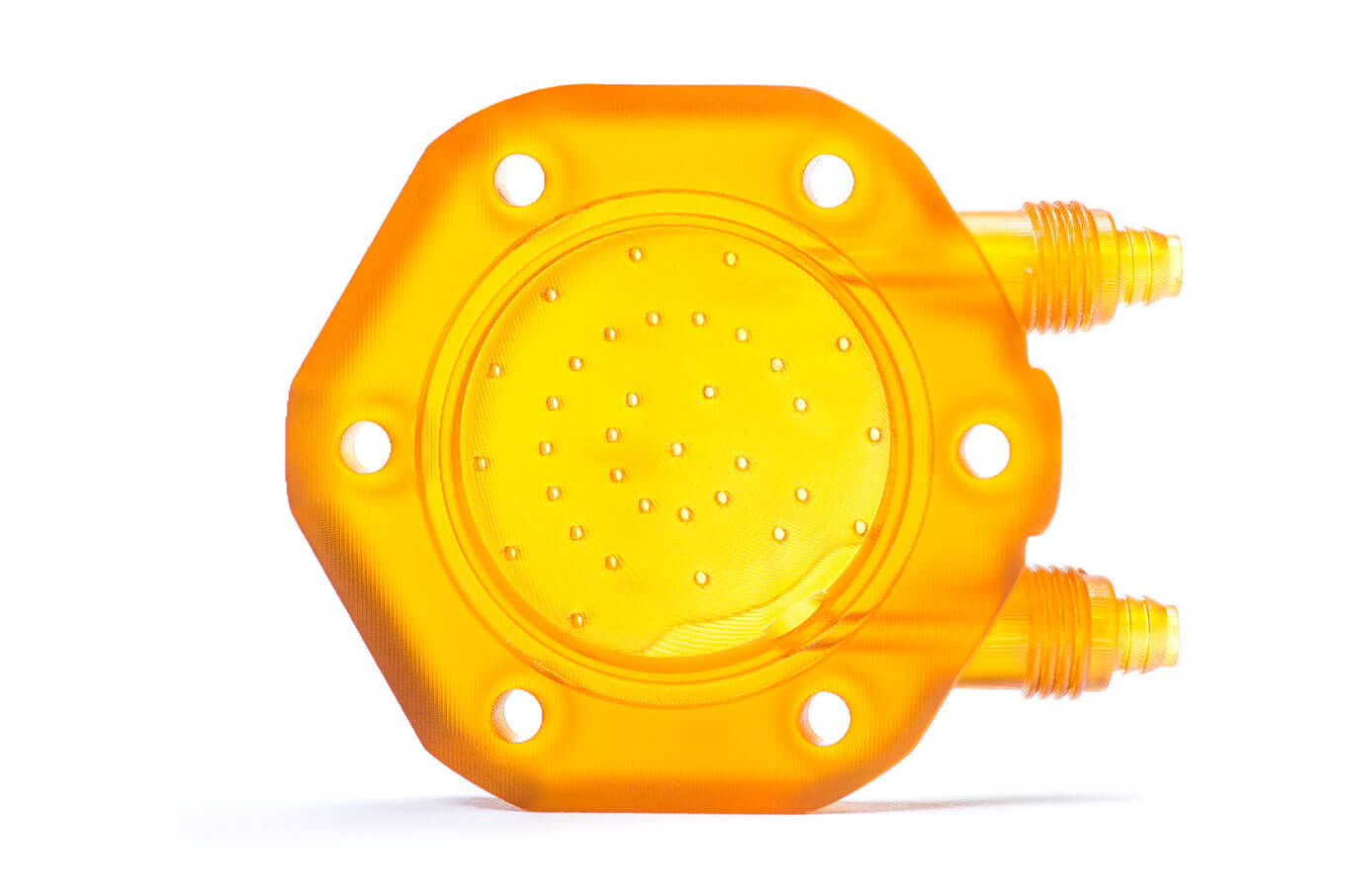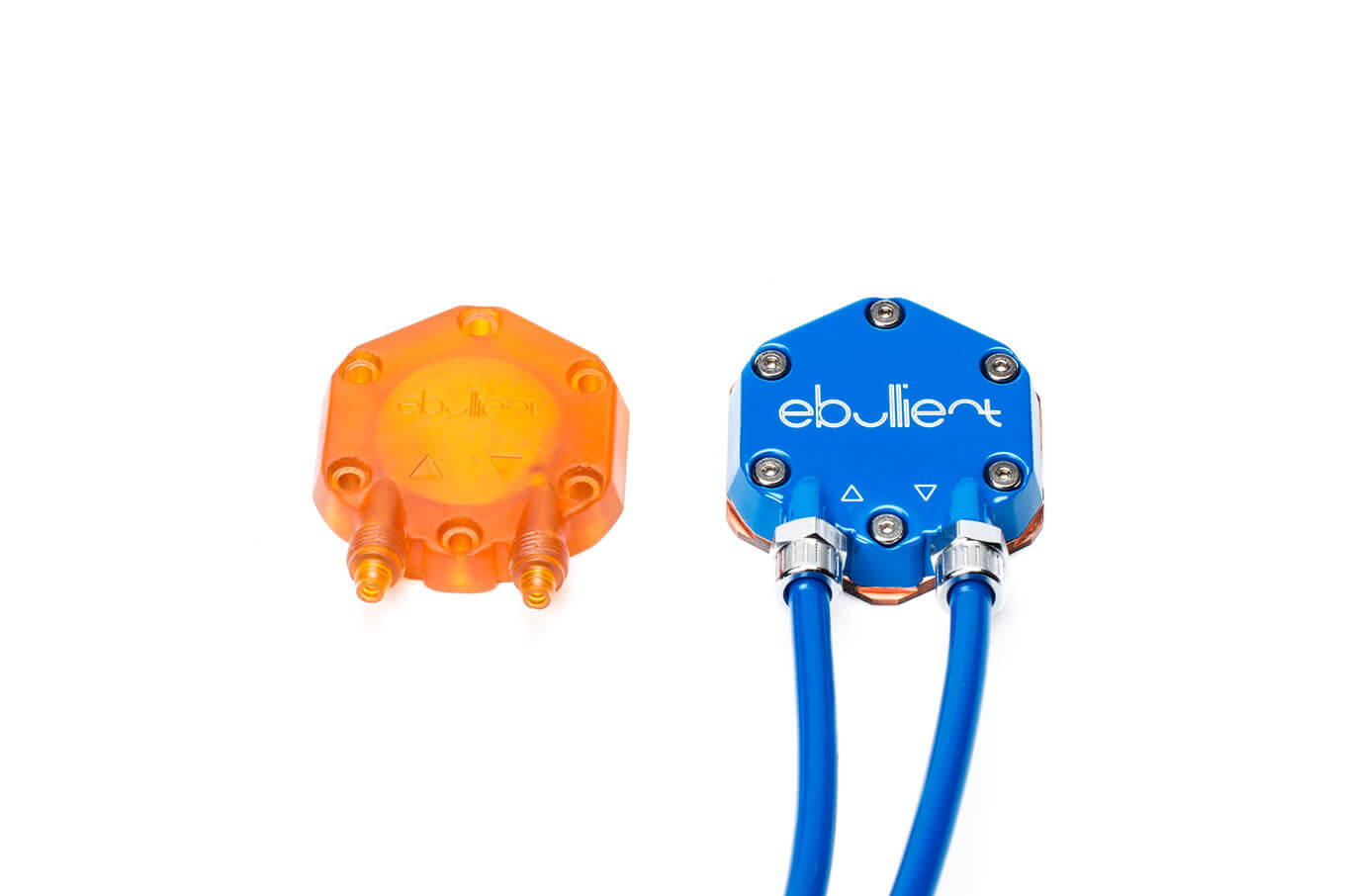Today, single-phase liquid cooling systems absorb heat by warming a water-glycol mixture or oil. Water-glycol systems present potentially catastrophic shorting and maintenance risks, and oil immersion systems have complicated servicing requirements and often rely on custom server designs.
Ebullient, based in Madison, Wisconsin, has developed a two-phase direct-to-chip cooling technology that overcomes the risks and requirements of single-phase liquid cooling. In its two-phase DirectJet precision cooling systems, sealed cooling modules are installed in servers and keep critical components cool. A non-conductive engineered fluid is pumped to a chamber in the cooling module and then jetted onto a copper surface in thermal contact with critical components of the server. The fluid partially vaporizes within the module to form tiny vapor bubbles that transfer heat away from the critical components to keep them cool.

Ebullient’s modules are designed with sophisticated CAD software and validated with advanced fluid flow and heat transfer analysis software. But until Ebullient partnered with Carbon, its cooling modules were injection molded, which imposed significant constraints on module design. For example, draft angles, the elimination of undercuts, and other injection molding requirements greatly inhibited design freedom and optimization. These design constraints tied the hands of Ebullient’s engineers and ultimately limited module performance. Module designs that had been optimized with CAD and analysis software often had to be later simplified to make them injection moldable, thereby breaking the digital thread between design and manufacturing.
“Carbon’s 3D printing technology allows Ebullient to connect the digital thread all the way from design to manufacturing,” said Joseph DeSimone, CEO of Carbon.
Producing cooling modules with Carbon’s 3D printing technology allows for contoured, graduated inlets that facilitate even, efficient flow of engineered fluid through the modules. In short, Carbon’s CLIP technology allows Ebullient to manufacture the part exactly how it was designed and optimized without special modifications for injection molding.

The material used in the cooling modules has to withstand significant forces – up to several hundred pounds of pressure – from mounting brackets and temperatures of up to 100 degrees Celsius. Most materials available to SLA and SLS tend to degrade around 60 degrees Celsius; few have a glass transition or heat deflection index of 100 degrees.
Carbon’s Cyanate Ester-based resin (CE 221) is the only material on the market that has a glass transition temperature of at least 175 °C [347 °F]. CE 221 exhibits excellent strength, stiffness and long-term thermal stability, making it particularly useful for under-the-hood applications, electronics, and industrial components.
“There is only one material that fits our performance requirements and that is CE 221. It withstands higher temps than all other materials and it isn’t as brittle, which means it can deform more than other materials without breaking.”
Brett LindemanDirector of Advanced Development at Ebullient
Producing cooling modules with CE 221 is also more cost effective than injection molding. Given the complexity of the part’s tiny features and internal cavities, a single mold can cost tens of thousands of dollars, and that mold is only suitable for one module design and will wear out over time.
Ebullient offers a wide variety of cooling modules for CPUs and graphics cards from leading hardware companies such as Intel, NVIDIA, AMD, and IBM, and its engineers are constantly developing new cooling modules for the latest computer architecture. CLIP technology allows Ebullient to avoid costly tooling expenses for each new module design.
“We work with many high tech companies who launch new products frequently. Production with CLIP gives us the ability to quickly adapt our module designs to meet their requirements whenever new products are released. With CLIP technology, we can manufacture new cooling modules more quickly and cost-effectively than ever before.”
Brett LindemanDirector of Advanced Development at Ebullient